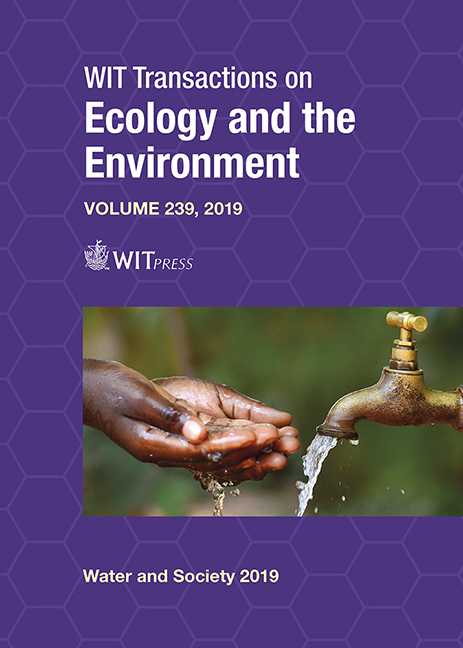PATH MODELLING ANALYSIS OF NATURAL RADIOACTIVITY IN DRINKING WATER AND PUBLIC HEALTH IMPACTS
Price
Free (open access)
Transaction
Volume
239
Pages
10
Page Range
295 - 304
Published
2019
Paper DOI
10.2495/WS190261
Copyright
WIT Press
Author(s)
LISA MARTINS, ALCIDES PEREIRA, ALCINO OLIVEIRA, LUÍS SANCHES FERNANDES, FERNANDO PACHECO
Abstract
In 2015, the United Nations announced the Sustainable Development Goals, to achieve a better and more sustainable future for all by 2030 and promoting global attention about groundwater protection through Goal 6 (clean water and sanitation). The coefficient of determination of the structural model of total non-mineral water (n=72) is extremely low for radon contamination in groundwater (R2=0.083). These results are not consistent because it is unlikely that all exogenous latent variables explain only less than 1% of radon contamination in groundwater. This discrepancy occurs because the total dataset is represented by several types of rocks with different radiological profiles. In this scenario, the complete dataset should not be singly applied in the structural equation modelling-partial least squares (SEM-PLS) model but somewhat separately in four lithological groups. From all studied lithologies, the structural model for Group V presents the highest coefficient of determination (R2=0.987), mainly due to the application of hydraulic turnover time. This feature addition improves this contamination model and also confirms that the water of deeper circuits has a lower radon concentration due to its short half-life. Future studies tend to expand knowledge about other hydrogeological features that can effectively influence the radon transfer from rocks to drinking water, improving the contamination model of radon to develop a radon risk map. This study is crucial for policymakers because the radon contamination into the aquifer systems may raise concerns for the general public, requiring the continuous monitoring for the assessment of harmful health effects to humans caused by the radionuclide’s exposure.
Keywords
radon, drinking water, SEM-PLS, harmful effects.





